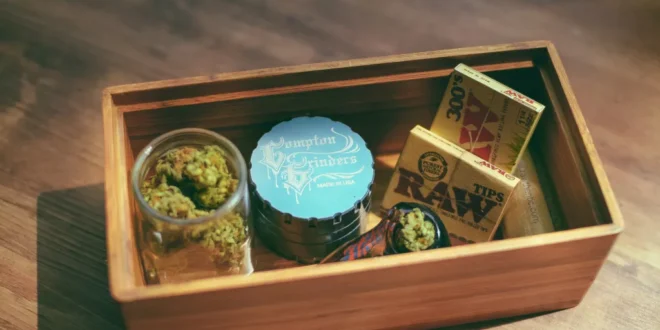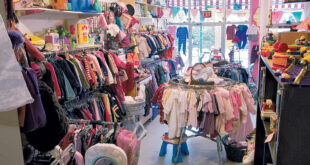Introduction
Stash boxes have long been used for the discreet storage of various items, ranging from herbs to precious keepsakes. These containers come in an array of styles and designs, reflecting the rich cultural diversity of the regions from which they originate. In this blog post, we will explore unique stash boxes from around the world, examining their historical significance, craftsmanship, and practical uses. By understanding these containers, we gain insight into the cultures that produced them, adding a layer of appreciation for these often-overlooked artifacts.
The Cultural Significance of Stash Boxes
Understanding the Importance
Stash boxes serve more than just a practical purpose; they are often embedded with cultural significance. Historically, these boxes have been used for storing valuable items, sacred objects, or personal treasures. For example, in many Indigenous cultures, boxes crafted from natural materials such as wood or bark were used to store ceremonial items, reflecting their connection to spirituality and heritage.
Symbolism Across Cultures
In various cultures, stash boxes symbolize security, privacy, and personal space. In Japan, for instance, intricate lacquered boxes, known as Jubako, are traditionally used during New Year celebrations to hold special foods. These beautifully crafted containers represent prosperity and are a testament to the craftsmanship of Japanese artisans. Similarly, in African cultures, hand-carved wooden boxes often hold spiritual or cultural artifacts, serving as a bridge between the physical and spiritual realms.
Unique Stash Boxes from Different Regions
1. Japanese Jubako
As mentioned earlier, Jubako are exquisite lacquered boxes often used during celebrations. These two- or three-tiered boxes are not only functional but also showcase the art of Japanese lacquerware, which has been practiced for centuries. Each box is meticulously crafted, with intricate designs that may include floral motifs or scenes from nature. Their aesthetic appeal and cultural significance make them a cherished item in Japanese households.
2. Indian Wooden Masala Boxes
In India, masala boxes, or masala dabbas, are essential in every household. These round, multi-compartment boxes are traditionally made from wood and are used to store various spices. Beyond their practicality, masala boxes reflect India’s rich culinary heritage. The design often includes decorative carvings, showcasing the craftsmanship of local artisans. Each compartment is dedicated to a specific spice, making it easy for cooks to access their ingredients while cooking.
3. Moroccan Spice Boxes
Moroccan culture is renowned for its vibrant spices and culinary traditions. Spice boxes, often crafted from wood or metal, are a staple in Moroccan kitchens. These boxes feature intricate carvings and colorful designs, highlighting the artistry of Moroccan craftsmen. They are used to store a variety of spices, reflecting the country’s rich culinary landscape. The use of spice boxes not only serves a practical purpose but also showcases the importance of spices in Moroccan culture.
4. Scandinavian Birch Bark Boxes
In Scandinavia, birch bark boxes have a long history of use, particularly among Indigenous Sami people. These boxes are made from the bark of birch trees, which is both flexible and durable.
5. Indian Brass and Copper Boxes
In India, brass and copper boxes are also popular for their aesthetic appeal and functionality. These containers, often intricately designed with engravings, are used for storing jewelry, spices, or small keepsakes. The craftsmanship involved in creating these boxes reflects India’s rich metallurgical traditions. They not only serve as practical storage solutions but also as decorative items that can enhance the aesthetics of any space.
6. Native American Dreamcatcher Boxes
Dreamcatcher boxes are an integral part of Native American culture, particularly among the Ojibwe people. These boxes often feature the iconic dreamcatcher design, symbolizing protection and guidance. Traditionally, these boxes were used to store items of significance, such as medicines or personal mementos. Today, they continue to serve as beautiful storage solutions while preserving the cultural heritage of Native American communities.
Choosing the Right Stash Box
Factors to Consider
When selecting a stash box from around the world, several factors should be taken into consideration. First and foremost, consider the purpose of the box. Will it be used for storing herbs, jewelry, or other items? This will help determine the size and style that best suits your needs.
Additionally, think about the materials used in the construction of the box. Natural materials such as wood, metal, or wicker often add character and authenticity to the piece. Look for boxes that reflect the craftsmanship and cultural significance of their origins.
Personal Preferences
Lastly, your personal aesthetic plays a crucial role in choosing the right stash box. Whether you prefer a minimalist design or something more ornate, there is a wide array of styles available. A well-chosen stash box can serve as both a functional item and a beautiful decorative piece in your home.
Care and Maintenance of Stash Boxes
Preserving Cultural Artifacts
Proper care and maintenance are essential to preserving the beauty and integrity of your stash box. Depending on the material, different care techniques may apply. For wooden boxes, it is advisable to use a soft cloth for dusting and to avoid exposing the box to excessive moisture, which can warp the wood.
Conclusion
Exploring stash boxes from around the world reveals a fascinating tapestry of culture, craftsmanship, and personal expression. Each box tells a story, reflecting the heritage and values of the people who created it. From Japanese Jubako to Indian masala boxes, these containers serve practical purposes while celebrating the beauty of diverse cultures.
By understanding the significance and variety of stash boxes, we can appreciate not only their functional use but also their cultural importance.
Are you passionate about sharing your insights and expertise? We invite you to write for us! Whether you’re a seasoned writer or just starting out. We’re looking for fresh perspectives on a variety of topics, from lifestyle and wellness to technology and travel.
 Lifeyet News Lifeyet News
Lifeyet News Lifeyet News





